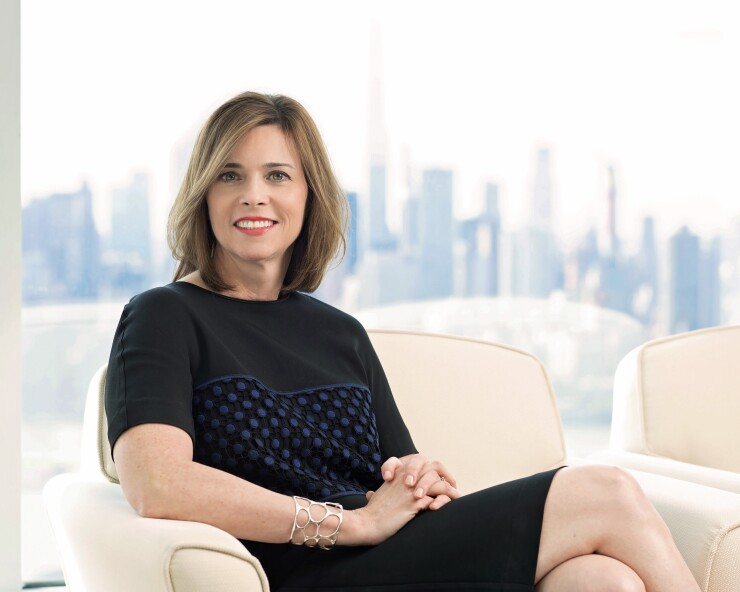What's it take to succeed at digital? Banks need to give customers a highly customized experience, some of the industry’s veteran digital bankers advise.
Tailoring products requires thinking differently about what digital can be, and investing in emerging technologies like advanced data analytics tools, artificial intelligence and machine learning, they say.
“The next generation [of digital] is getting to a place where we’re offering a more predictive and dynamic experience to the customer,” said Alice Milligan, the chief customer and digital experience officer for Citigroup's global cards unit.
Milligan, who was one of

Citi sends personalized videos to customers who have received a new card product to explain benefits and rewards programs. It is also using the geolocation capabilities of smartphones to ask customers if they want to initiate a
Moreover, Citi has ramped up its data and analytics capabilities and has partnered with the software vendor Appboy, a provider of customized digital marketing solutions.
Milligan’s focus on personalizing the Citi mobile experience stems from what it knows about customer behavior: Mobile banking users whose bank has a high-functioning app — defined as apps that have five or more features — are 80% more likely to say they will stay with their current bank for the next 12 months, according to a consumer survey released in September by Citi.
Such customers also tend to be more financially literate; 71% of those surveyed who log into mobile banking at least once per week report being aware of their financial standing, compared to 49% who do so less than once ar week.
That is why Milligan has spearheaded something of a mobile revolution at Citi; she has made 85% of services that are available to Citi card customers via other channels available on the mobile app, and plans to make it 100% by yearend.
“They are a very engaged customer base,” Milligan said. “We’ve spent time investing in data and analytics platforms to understand how customers interact with us, and what their digital journeys are.”
Customization in digital also been a focus for Regions Bank in Birmingham, Ala. Last year, the $126 billion-asset company began offering a digital “guided discovery tool” that leads potential customers to products that may be right for them. The system makes that determination based on information customers provide it about their financial status and goals. Regions worked with the vendor Ignite Sales to create an analytics engine on the back end to power the service.
“Companies like Amazon, Netflix and Spotify have raised the bar in this broad category called personalization,” said Andy Hernandez, head of e-business at Regions.
“Consumers see a benefit to letting a company like Spotify keep track of what they’re listening to; it provides them a more customized experience,” said Hernandez, also a
That is why Regions is working on offering its customers more digital tools that can proactively help them make decisions or manage money.
“We’re looking at offering more tools around personalized money management advice; banks have access to so much data that we can be more personal and relevant,” Hernandez said.
He stressed any such tool would be strictly opt-in (its guided discovery tool is currently an opt-in service as well) because not all customers will be comfortable with these kind of services. But he noted that many customers who may not even be asking for such a digital service now will want one once they see the possibilities.
“I wasn’t asking Spotify to know me better, but they do and I love it,” Hernandez added. “Once consumers experience what’s possible, it then starts to become commonplace.”
Though banks like Citi and Regions are at the forefront of this trend, they are hardly alone.
“We’re seeing a pretty big demand from banks for acquiring new data sources, investing in data and analytics tools and data-related services,” said Nilesh Vaidya, senior vice president at the technology and consulting firm Capgemini. “They’re trying to know their customers better, better identify customer segments and offer more customized products.”
Vaidya said that the industry is still in the early stages of this evolution and that much of it is being done by top-tier institutions with larger IT budgets and resources — and it will take time before customers get an Amazon or Netflix-type experience from banks.
“There’s a long way to go, but it is something that’s being driven not only [by technology people] but marketing departments and others that want improvements in how they target customers,” he said.
Indeed, that appetite for digital customization throughout the bank is something Regions’ Hernandez can relate to.
“There isn’t a single line-of-business leader that isn’t asking me about this and thinking about digital as a way to advance their business objectives,” he said. For that reason, Hernandez’s team has to take a “prioritization” approach as to which projects get done next.
“Perhaps it’s a good problem to have, but we can’t do everything at once,” he said.





